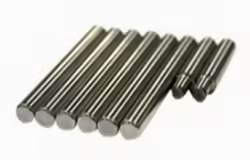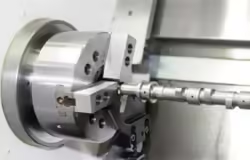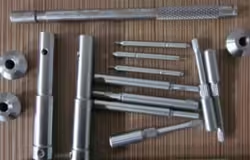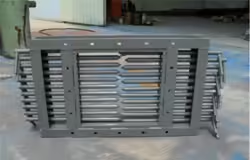
Why 1020 Steel Rod is Perfect for Machining
Introduction
Selecting the right material is crucial when it comes to machining, and 1020 steel rod stands out as a top choice in many industries. Its balanced properties, excellent machinability, and cost-effectiveness make it a go-to option for a wide range of applications. This guide will explore why 1020 steel rod is perfect for machining, its advantages, and its common uses, providing valuable insights for manufacturers and machinists.
What is 1020 Steel Rod?
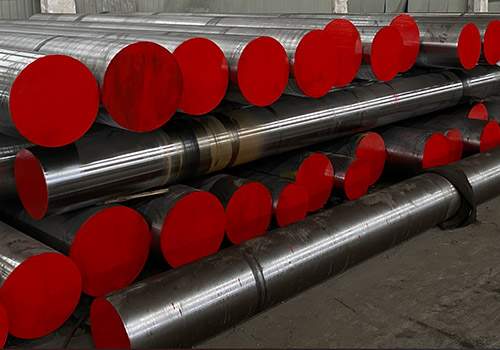
1020 steel rod is a low-carbon steel containing approximately 0.20% carbon by weight. Classified under mild steel, it offers a good balance of strength, ductility, and weldability. Its mechanical properties make it suitable for various industrial uses, especially in applications where machinability is a priority.
Key Properties of 1020 Steel Rod
- Carbon Content: Approximately 0.18% to 0.23%, providing moderate strength and ductility
- Tensile Strength: Between 410-550 MPa, suitable for structural and mechanical applications
- Hardness: Ranges between 119-235 HB, making it relatively soft and easy to machine
- Ductility: Allows for forming and shaping without breaking
- Weldability: Ideal for welding operations, widely used in construction and manufacturing
Why 1020 Steel Rod is Perfect for Machining
Machinability refers to how easily a material can be shaped or cut using various machining techniques. 1020 steel rod is considered one of the best materials for machining, offering several key advantages.
Low Carbon Content for Easy Machinability
The low carbon content in 1020 steel rod makes it softer and more ductile than higher carbon steels. This property allows for easy cutting, shaping, and drilling without causing excessive wear on tools or requiring excessive force.
Reduced Tool Wear
Due to its lower hardness, 1020 steel rod exerts less stress on cutting tools, which reduces tool wear and extends tool life. This not only reduces operational costs but also ensures smoother machining operations with fewer interruptions.
Versatility in Machining Processes
1020 steel rod is highly versatile and can be used in various machining processes, including turning, milling, drilling, and threading. Its ease of use across different processes makes it a popular choice in manufacturing.
Excellent Surface Finish
One of the reasons machinists prefer 1020 steel rod is its ability to produce a smooth surface finish. This eliminates the need for extensive finishing operations, saving time and effort while ensuring high-quality output.
Cost-Effectiveness
Cost is a significant factor in material selection. 1020 steel rod is not only affordable but also provides an excellent balance between machinability and mechanical performance. Its lower price, compared to other grades of steel, makes it a preferred choice for large-scale production runs.
Heat Treatment Flexibility
While 1020 steel rod is commonly used in its annealed state, it can also undergo heat treatment to enhance its surface hardness. Processes like carburizing and case hardening allow manufacturers to improve wear resistance while retaining core ductility.
Wide Availability
1020 steel rod is widely available in various shapes and sizes, making it easy to source for custom applications. Whether you need round rods, bars, or custom profiles, this material can be found in most steel suppliers, ensuring quick access for manufacturers.
Applications of 1020 Steel Rod in Machining
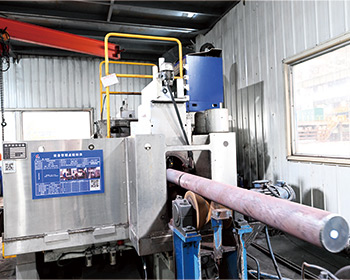
1020 steel rod is used across several industries due to its machinability, affordability, and versatility. Below are some of the common applications of 1020 steel rod in machining.
Automotive Components
In the automotive sector, 1020 steel rod is frequently used to manufacture parts such as shafts, gears, and brackets. Its machinability and strength make it ideal for components that require precision and durability.
Structural and Construction Components
In construction, 1020 steel rod is commonly used for structural elements, including beams, supports, and frames. Its weldability and machinability allow for the efficient production of these components.
Industrial Machinery Parts
Many industrial machinery parts, such as bushings, pins, and rods, are made from 1020 steel rod due to its ease of machining and cost-effectiveness. These parts benefit from the material’s strength and ability to withstand mechanical stresses.
Fasteners and Fittings
1020 steel rod is also used in producing fasteners like bolts, nuts, and screws. Its machinability allows for precise threading and shaping, making it a great choice for both standard and custom fasteners.
Comparison of 1020 Steel Rod with Other Steel Grades
To help you understand why 1020 steel rod is favored in machining, here’s a comparison table with other steel grades commonly used in the industry:
| Steel Grade | Carbon Content | Machinability | Tensile Strength (MPa) | Cost | Common Applications |
|---|---|---|---|---|---|
| 1020 Steel | 0.20% | Excellent | 410-550 | Low | Automotive, machinery |
| 1045 Steel | 0.45% | Good | 570-700 | Moderate | Gears, shafts, pins |
| 4140 Steel | 0.40% Cr-Mo alloy | Moderate | 655-850 | Higher | Aerospace, high-stress parts |
| A36 Steel | 0.25% | Good | 400-550 | Low | Construction, structural |
This table highlights how 1020 steel rod compares to other steel grades in terms of machinability, strength, and cost, showcasing its suitability for a wide range of applications.
Conclusion
1020 steel rod is an excellent material for machining due to its low carbon content, ease of machinability, and cost-effectiveness. Whether you are manufacturing automotive components, structural parts, or fasteners, 1020 steel rod offers the perfect balance between affordability and performance. Its versatility in various machining processes, availability in multiple sizes, and ability to undergo heat treatment make it a top choice for manufacturers looking for reliable material.
By understanding the advantages of 1020 steel rod, machinists and manufacturers can optimize their production processes and improve the efficiency of their operations.
FAQ
What makes 1020 steel round bar suitable for machining?
The low carbon content in 1020 steel round bar makes it softer and more ductile, allowing it to be easily cut, drilled, and shaped. Its excellent machinability reduces tool wear and enables smooth machining operations.
Can 1020 steel round bar undergo heat treatment?
Yes, 1020 steel round bar can be heat-treated through processes like carburizing and case hardening to improve its surface hardness while maintaining core ductility. This makes it ideal for parts that require wear resistance.
What are the common applications of 1020 steel round bar?
1020 steel round bar is commonly used in automotive components, structural parts, industrial machinery, and fasteners. Its machinability and versatility make it ideal for a variety of industries.
How does 1020 steel round bar compare to other low-carbon steels?
Compared to other low-carbon steels like A36, 1020 steel round bar offers better machinability and can be heat-treated for enhanced strength. This makes it a more versatile option for different applications.
Is 1020 steel round bar a cost-effective material?
Yes, 1020 steel round bar is an affordable material with excellent machinability, making it suitable for high-volume production in industries like automotive, construction, and manufacturing.

